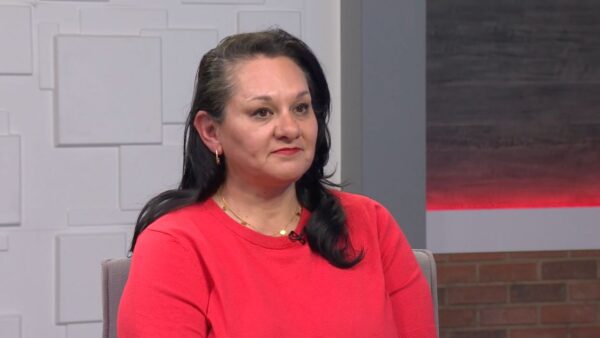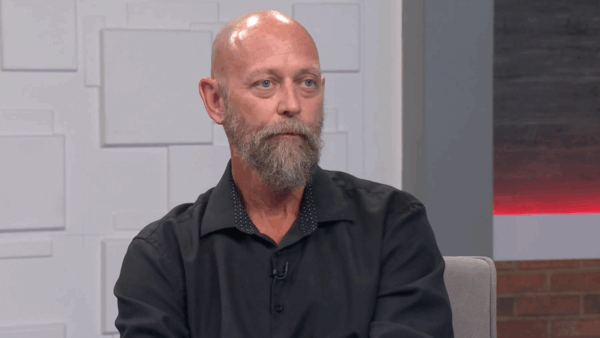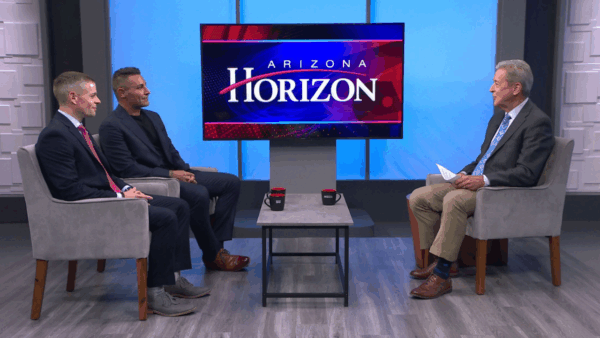As people step up their charitable giving during the holidays, we’ll discuss how you can make sure you give donations to reputable organizations. Robert Ashcraft, executive director of the Lodestar Center for Philanthropy and Nonprofit Innovation at Arizona State University, will tell us how to be a smart giver.
Ted Simons: Tonight' edition of Arizona giving and leading looks at better, more informed giving. A big chunk of charity donations occur during the holiday and there are ways to make sure your gift goes where intended. Robert Ashcraft is executive director of ASU's Lodestar Center for nonprofit innovation. How do you ensure your donations are going to reputable folks?
Robert Ashcraft: it's a great question particularly this time of year. It's the $258 billion question, which is the amount individuals donated to charitable causes in the last time the data were collected in 2014. Huge question. Out of that number roughly anywhere it depends on the community, about 40% rushes in in November and December. I would offer that as a framework for this conversation. It's huge. Ted, there are several things to think about. It's not one size fits all. There's no easy answer. One cut of this would be the kind of organization that a household or individual would be intimately familiar with. Maybe it's a school, maybe it's a child care center, a hospital. Maybe it's the some for any. Something they intimately as a patron or client have witnessed firsthand and are a part of, feel grateful for. One could suggest a charitable donation could be given without a huge amount of analysis of finances and other things that would be more important if one had an area of interest that, purpose, something they care about that they were less informed about what kind of organization would be out there that would hit that philanthropic heart. Does that make sense?
Ted Simons: Sure. Say during the year something touched you, a health issue, you adopted an animal, you thought I would like to donate to those folks or folks like. That what questions do you ask?
Robert Ashcraft: That's great. So we think of this in two, three ways. One is the issue of transparency. The question is is the nonprofit in question transparent in how it is that they they a articulate their mission, their programs, outputs, inputs, all the ingredients, expressing that to donors, then evidence based. Are they transparent about what the evidence would be that demonstrates the impact. So for many individuals and again the majority of folks that give in philanthropy, it's not businesses, corporations, it's individuals. People are surprised with that. That they often lead with their heart. The argument here would be add the head to the heart. Ask some of those questions and transparency becomes a huge issue.
Ted Simons: Say that my favorite charity or the charity I'm most interested in, their transparency isn't all that great yet I want to make sure my donation is private. I don't want them necessarily spilling their guts to the rest of the world. What balance is played there?
Robert Ashcraft: Well, it's a balance. There are certain metrics, if you will, most donors don't go to this level but one could. That is has the donor seen the form 990, which is the ICE form that one has to file and declare particularly over a certain size nonprofit that articulates all kinds of analysis including things like compensation and ratios about program to administration, all of that. It's a question to ask. It should be transparent. It's readily available online if one knows where to go. There's a lot of other issues about issues of boards and governance. The issues of even the regularity of meetings that are open or transparent, I'll use that word again, in governing the life of an organization. These are nonprofits that have a public purpose. A charitable purpose. Therefore the veil and shroud of darkness and secrecy is taken away.
Ted Simons: how serious a problem are shady nonprofits and charitable organizations especially this time of year?
Robert Ashcraft: Well, often it's focused on this time of year because this is the holiday season. This is the season where people take was and -- pause and there's a generosity of spirit, a great part of community. I'm knot so sure there's any more evidence that it's a December versus a march problem or what have you. Nor should it be said that because there are these exceptions that do get in the press and become very popular in story telling around embezzlement or scandals that somehow than taints an entire nonprofit sector. That's an unfortunate tainting it seems to me. Nonetheless one should practice a discipline just as one would do in investing frankly. And other avenues of their life, their pursuits.
Ted Simons: what about websites? Cherry navigator, guide star, Better Business Bureau has a website. Are they worth checking into?
Robert Ashcraft: Well, the stance would be this. Yes. Worth checking into but then with cautious interpretation. You just named the majority. There's several. Those are the big ones. It's difficult to reduce a nonprofit down to a star. To a single variable number. That's what some of the what are called watch dog sites do. This is complicated work. It's difficult. There are reasons, explanations, around why it is that certain ingredients culminate in a certain score. That's where there's further probing and questioning. Actually visiting an organization if place based, some are not, those that have buildings and structures making an appointment to actually see staff, inviting oneself in an appropriate way to engage in some way. Become a volunteer if it's a volunteer type organization. There's ways to actually get up close and personal in a high touch kind of way that then marries what I have argued is the heart with the head in making a charitable gift.
Ted Simons: there are no state agencies, though, that verify charitable organizations. You find out they are bad when someone complains.
Robert Ashcraft: the flag. The whistle. There are 30 states that have a charitable bureau or state level organization whose purpose actually is to focus on the charitable sector. Here nonprofits would register with corporation commission and if there is any sense that there's something run afoul or a person has a great concern, that's the matter of the Attorney General. That's just the way Arizona is structured. I think the larger potential here is remember that the mainstream of nonprofits are well intentioned, mission driven, high impact focus. They obviously do what they do to make the community a better place. That would be the mainstream. So the self-regulation -- nobody wants a stronger, more accountable, appropriate nonprofit sector than the vast majority of the nonprofits. That's been pretty much the stance at least in places like Arizona.
Ted Simons: all right. Great information for this time of year. For all times of the year actually.
Robert Ashcraft: particularly this time of year.
Ted Simons: good to have you here.
Robert Ashcraft: My pleasure.
Robert Ashcraft:Executive director of the Lodestar Center for Philanthropy and Nonprofit Innovation at Arizona State University























